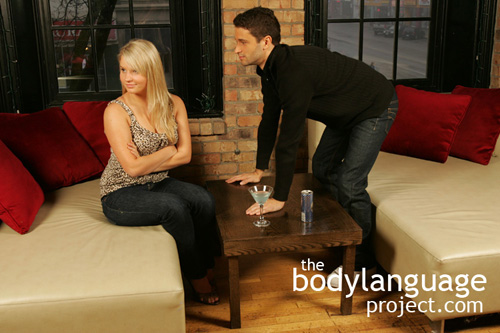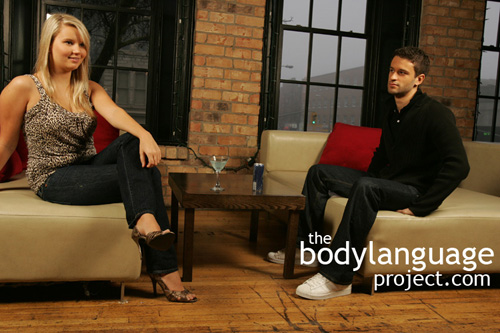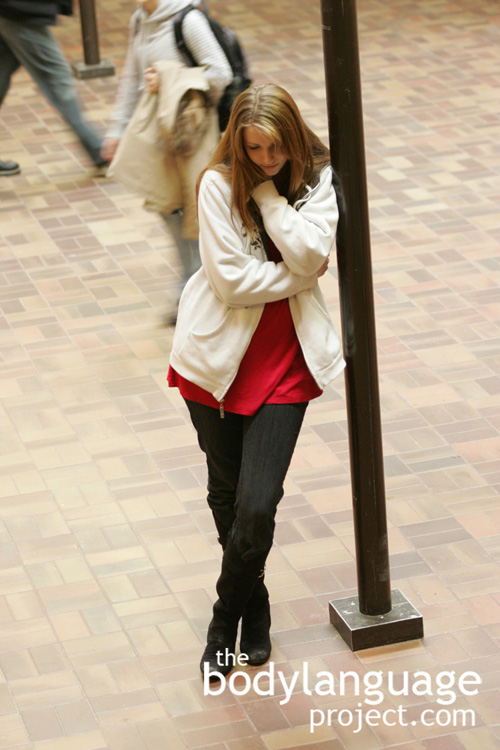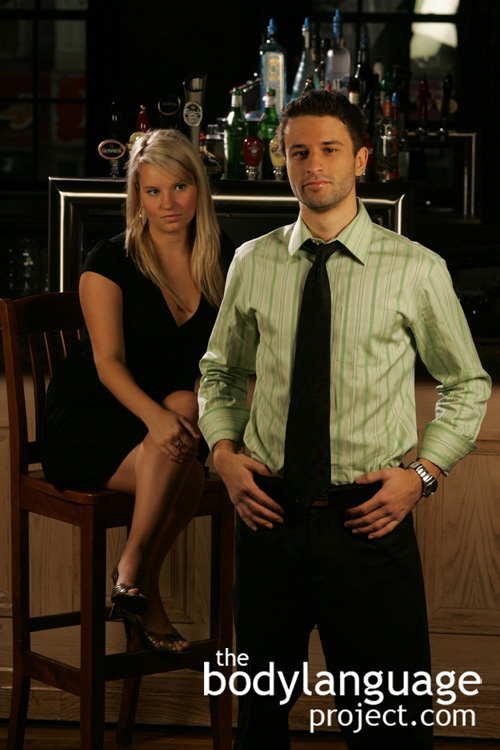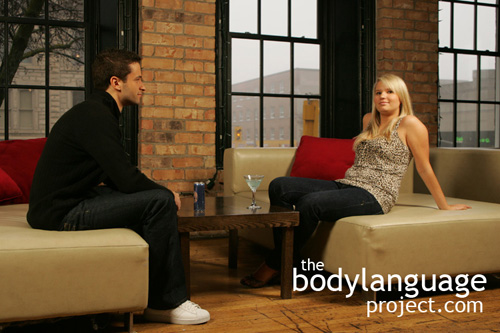When someone talks about energy displacement and body language they are talking about movements that create relief. Someone that is nervous or excited will find relief in rubbing their legs with their hands called “leg cleansing”, or they might rub their hands together or stroke an object vigorously. Leg cleansing is a gesture that usually goes unnoticed because it happens underneath the table, but an astute observer will see the upper body move serving to give it away. An example of leg cleaning is that of a baseball player that is on deck and getting ready to bat. His hands might be sweaty from the excitement so he rubs his hands on his thighs, soon enough this becomes a habit and he does this every time he comes to bat regardless of whether his hands are sweaty. With repetition he has conditioned himself to seek comfort by performing this gesture. Self touching also produces relaxing chemicals in his body to help him deal with the stress and burns up nervous energy. Self touching isn’t always related to energy displacement although in this case it is. Energy displacement means the same thing as stress motivated energy burning. It is the burning of energy that provides a trickle release that occupies the mind and produces soothing neurochemicals.
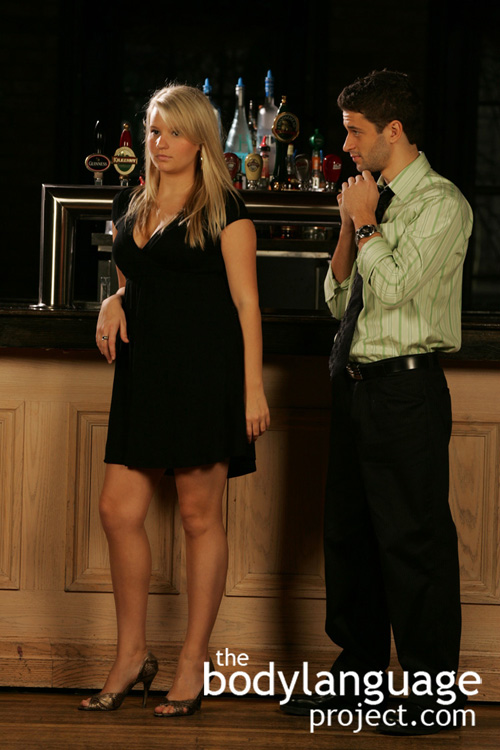
Extreme anxiety causes the desire to control the pain by inflicting it against ourselves. It gives back our sense of control. People who resort to ‘cutting’ also seek to displace their anxiety and control it.
Energy displacement isn’t just for athletes, it happens all over the place from the boardroom to the classroom. We see people rubbing their hands together in excitement or wringing their hands showing inner turmoil and in during extreme stress, pacing, or even self inflicted pain such as ear pulling, scratching, or pinching. Energy displacement allows for a controlled release of tension without creating fatigue. Energy displacement is akin to the natural high that is achieved through punishing physical exercise except in this case the endorphin rush comes much less potently but the action still provides a stress reducer.
When a woman suddenly becomes “cold” as a decision gets close in a meeting they might begin by cross their arms and begin to stroke their elbows or forearms. The temperature in the room hasn’t dropping though, what she is feeling is an emotional change creating an uneasy feeling. To sooth herself, she strokes her body and this reminds her of childhood feelings where mom comforted her. A nervous husband who waits outside a delivery room will pace back and forth. His movement gives him something to do and also burns up excess energy. Generally men’s displacement actions will be easier to spot then women’s since they will be more aggressive. Men feel that when something is good, more is better, and take almost everything to extremes. In fact, one of the leading causes of preventable gum disease is brushing the teeth too hard or for too long, and men are often most at fault for this. Women’s postures, on the other hand, will melt into their regular body language and can therefore be harder to spot.
An entire host of gestures can be used for energy displacement and they vary from person to person and culture to culture. Any movement that has no inherent or immediate function and that is done when faced with stress can be called energy displacement. With observation, you can catalog energy displacement cues in family members, friends and even bosses. If you observe energy displacement body language in friends, an appropriate response is to offer comfort, but if it is found in a boss or employee, or during a sale, then it is usually time to back off and give them time to think things over. Allow a stressed out individual some time to reach a conclusion on their own.



